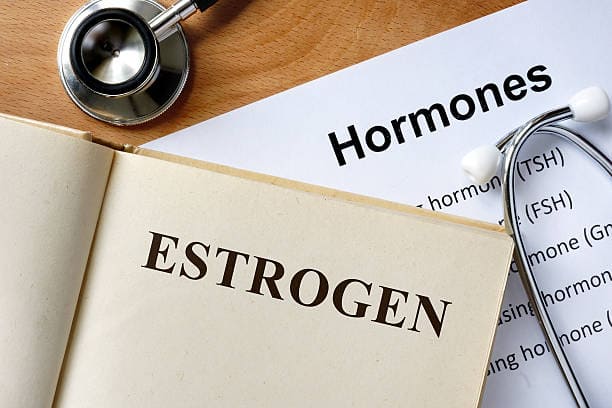The female reproductive system serves several crucial functions essential for reproduction. It is responsible for producing and releasing the female egg cells, known as ova or oocytes, required for fertilization. These ova are then transported to the fallopian tubes, where conception typically occurs through the union of an egg and sperm.
Following fertilization, the resulting embryo travels to the uterus and implants itself into the uterine wall, initiating the early stages of pregnancy. However, if fertilization or implantation does not occur, the uterus undergoes menstruation, a process characterized by the shedding of its lining.
Additionally, the female reproductive system plays a vital role in regulating hormonal activity by producing female sex hormones. These hormones are crucial for maintaining the reproductive cycle and ensuring the proper functioning of the reproductive organs.
Anatomy of the female reproductive system
The female anatomy comprises both internal and external structures crucial for reproduction and sexual function. Let’s explore each part in detail:
External Female Reproductive Structures:
- Labia Majora: These are the outer folds of skin surrounding the vaginal opening. They protect the delicate internal organs and contain sweat and oil glands.
- Labia Minora: Located within the labia majora, these smaller folds of tissue enclose the openings to the vagina and urethra. They contribute to maintaining the cleanliness and moisture of the genital area.
- Bartholin’s Glands: Found near the vaginal opening, these glands secrete mucus to lubricate the vagina during sexual arousal, enhancing comfort and reducing friction.
- Clitoris: Positioned at the top of the vulva, the clitoris is a highly sensitive organ responsible for sexual pleasure. It contains numerous nerve endings and can become erect when stimulated.
Internal Reproductive Organs:
- Vagina: This muscular canal connects the external genitalia to the cervix of the uterus. It serves as the passageway for menstrual flow, sexual intercourse, and childbirth.
- Uterus (Womb): Shaped like a pear, the uterus houses and nourishes a developing fetus during pregnancy. It consists of the cervix, which opens into the vagina, and the main body (corpus) capable of expanding to accommodate fetal growth.
- Ovaries: These small, oval-shaped glands are located on either side of the uterus and are responsible for producing eggs (ova) and female sex hormones, such as estrogen and progesterone.
- Fallopian Tubes: These slender tubes extend from the ovaries to the uterus and serve as conduits for transporting eggs from the ovaries to the uterus. Fertilization typically occurs within the fallopian tubes when an egg encounters sperm.
However, Understanding the structures of the female reproductive system is essential for comprehending reproductive health, fertility, and sexual function.
The menstrual cycle
The menstrual cycle, a vital aspect of female reproductive health, involves a series of hormonal fluctuations and physiological changes aimed at preparing the body for potential pregnancy. Women of childbearing age go through a series of hormonal changes every month, regardless of their intention to conceive. This cycle, known as the menstrual cycle, revolves around the possibility of pregnancy. Let’s delve into what happens during this cycle in simpler terms.
The cycle begins with menstruation, the shedding of the uterine lining, typically lasting about 3-7 days. This phase marks the start of a new menstrual cycle and is triggered by a drop in estrogen and progesterone levels. The menstrual cycle typically spans about 28 days and consists of three main phases: the follicular phase, ovulation, and the luteal phase.
Four key hormones play crucial roles in regulating the menstrual cycle: follicle-stimulating hormone (FSH), luteinizing hormone (LH), estrogen, and progesterone. Let’s break down the menstrual cycle into its phases:
Follicular Phase:
This phase kicks off on the first day of menstruation. Here’s what happens:
- FSH and LH are released from the brain and travel to the ovaries, stimulating the growth of multiple follicles, each containing an egg.
- These hormones also prompt an increase in estrogen production.
- Rising estrogen levels signal the body to halt FSH production, ensuring only one dominant follicle continues to mature.
- As the follicular phase progresses, one follicle becomes dominant while others stop growing.
- The dominant follicle releases estrogen.
Ovulatory Phase:
Around 14 days after the follicular phase begins, ovulation occurs. Here’s a rundown:
- The surge in estrogen triggers an increase in LH production.
- The dominant follicle releases its egg (ovulation), which is then captured by the fallopian tubes.
- Meanwhile, the cervix produces thick mucus to aid sperm movement towards the egg if intercourse occurs.
Luteal Phase:
Following ovulation, the luteal phase commences:
- The empty follicle transforms into the corpus luteum, which secretes progesterone, preparing the uterus for potential pregnancy.
- If fertilization occurs, the embryo implants in the uterus, marking the start of pregnancy.
- But, If no fertilization happens, the egg passes through, prompting the breakdown and shedding of the uterine lining, leading to the next menstrual period.
Throughout the menstrual cycle, the interplay of hormones—FSH, LH, estrogen, and progesterone—regulates the growth and release of eggs, as well as the changes in the uterine lining. Understanding these phases is essential for predicting fertility, monitoring reproductive health, and managing menstrual-related symptoms.
Number of eggs in a the female reproductive system
- At birth, a female typically has around 1 to 2 million eggs within her ovaries.
- By puberty, only about 300,000 eggs remain.
- Throughout her reproductive years, approximately 500 eggs will be ovulated.
- Any remaining eggs gradually decline and are depleted at menopause.
Sources:
- National Institutes of Health
- The Merck Manual
- American Society of Reproductive Medicine

